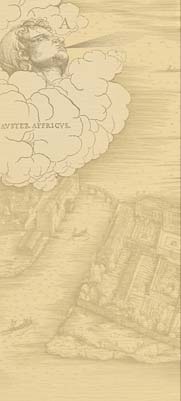Michael's Life
Michael of Rhodes signed onto a Venetian galley in 1401 as a common oarsman. Over the next four decades he sailed on dozens of voyages, either in the war galleys of the Venetian navy, or in the commercial galleys of the merchant fleet. He rose in the ranks, attaining a number of different offices, including the highest rank a non-noble could have in Venetian service.
Years later, Michael recorded his voyages, listing his destinations, his rank, and the officers with whom he served. From Michael’s records we can reconstruct a great deal about the progress of his career, as he rose from "man of the oar," to nochiero, paron, comito, "man of the council," and finally to armiraio.
- Homo da Remo 1401-1406
- Nochiero 1407-1413
- Paron 1414-1420
- Comito 1421-1434
- Homo de Conseio and Armiraio 1435-1443
- The Final Years 1444-1445
- The Manuscript
- Journey Map
Find out more:
Since Michael's manuscript has never been available for study, there is nothing yet in print about his life or the manuscript. One of the main goals of the Michael of Rhodes Project is the publication of a three-volume work entitled The Book of Michael of Rhodes, A Fifteenth-Century Mariner in Service to Venice, edited by Pamela O. Long, David McGee, and Alan M. Stahl. The publication will include a full photographic facsimile of the manuscript, an edition of the original Venetian text with English translation on facing pages, and a volume of scholarly studies about the contents of the manuscript. The book will be published by The MIT Press in 2007.
Michael wrote a second manuscript which is published as Pietro di Versi, Raxion de' marineri. Taccuino nautico del XV secolo, ed. A. Conterio (Venice 1991). An earlier Venetian compilation is available in English as John Dotson, ed., Merchant Culture in Fourteenth Century Venice: the Zibaldone da Canal (Binghamton, N.Y. 1994). For the history of the writing down of practical texts, see Pamela O. Long, Openness, Secrecy, Authorship: Technical Arts and the Culture Of Knowledge From Antiquity to the Renaissance (Baltimore, 2001).











